Table of Contents[Hide][Show]
- What is GLP-1?
- Why Is GLP-1 Important for Type 2 Diabetes and Prediabetes?
- Science-Backed GLP-1 Boosting Foods to Include in Your Diabetes Diet
- 1. Viscous Dietary Fiber
- 2. High-Fiber Vegetables
- 3. Prebiotic Fibers
- 4. Nuts and Seeds
- 5. Protein-Rich Foods
- 6. Berry-Boosting Power
- Lifestyle Tips to Maximize GLP-1 Naturally
- Small Changes, Big Results
If you’re living with type 2 diabetes or prediabetes, you’re likely familiar with GLP-1, or rather, the medications GLP-1 agonists Ozempic and Wegovy.
But did you know that certain foods can naturally enhance GLP-1 levels to boost weight loss and help regulate blood sugar?
Let’s dive into understanding GLP-1, how it can benefit your diabetes health and how to harness the power of GLP-1-boosting foods to improve blood sugar and weight loss outcomes.
What is GLP-1?
GLP-1, or glucagon-like peptide-1, is a hormone your body releases after you eat.
This powerful hormone plays a critical role in blood sugar control, weight regulation, and satiety (the feeling of fullness after eating).
Interestingly, GLP-1 influences multiple regions of our brain and neural circuits throughout our body that control our food intake and body weight.
GLP-1 also helps slow down how quickly food moves through our digestive tract, a key mechanism involved in appetite control. GLP-1 also impacts gut bacteria in a positive way, helping to regulate food intake.
One of its primary functions is to stimulate insulin secretion from the pancreas when blood sugar levels are elevated, which helps to lower blood sugar levels.
GLP-1 also suppresses the secretion of glucagon, another hormone that raises blood sugar levels.
Why Is GLP-1 Important for Type 2 Diabetes and Prediabetes?
Just to be clear, we’re not talking about GLP-1 medications, but the GLP-1 hormone your body produces naturally.
Many people with type 2 diabetes and prediabetes have two issues:
- High blood sugar levels
- High cholesterol/fatty acid levels
Researchers call this combination ‘glucolipotoxicity.’ In the presence of glucolipotoxicity, GLP-1 levels decrease.
What this means is that many people with type 2 diabetes and prediabetes have decreased production of GLP-1. Unfortunately, this has a flow on effect.
To name a few ways reduced production of GLP-1 may influence your body:
- It reduces the ability of cells in your body to uptake glucose
- It increases triglyceride accumulation
- It decreases insulin secretion
- It impairs glucose tolerance in cells
All of this means, difficulty achieving blood sugar control and difficulty losing weight, along with higher cholesterol levels.
For those with prediabetes, low GLP‐1 levels are a risk factor in the development of type 2 diabetes.
GLP-1 medications come with many, many potential side effects!
Boosting GLP-1 levels naturally with food has no side effects and provides an effective long term strategy to improve blood sugar and promote weight loss!
Science-Backed GLP-1 Boosting Foods to Include in Your Diabetes Diet
1. Viscous Dietary Fiber
Foods rich in viscous fibers slow down digestion by forming a gel-like substance in the stomach and intestines.
This slower digestion enhances nutrient delivery to the distant part of the intestine, where GLP-1-producing cells are located. This helps to prolong the secretion of the GLP-1 hormone.
Examples of viscous dietary fiber include:
- Chia seeds
- Flaxseeds
- Psyllium husk
How to incorporate: Chia seeds can be mixed into smoothies, yogurt, or soaked overnight in almond milk for a fiber-rich chia pudding. Flaxseeds and psyllium husk work well blended into smoothies or sprinkled over salads, with ground flax also being a great addition to baked goods for extra fiber and healthy fats.
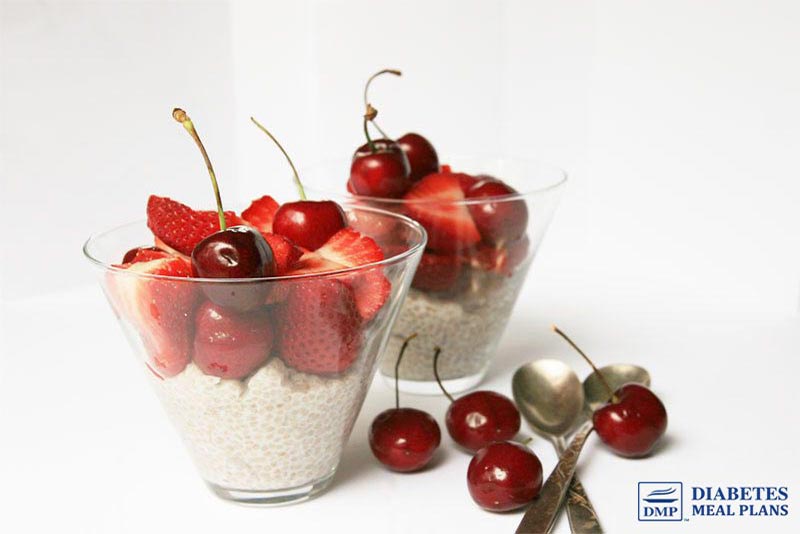
2. High-Fiber Vegetables
Vegetables rich in fiber, such as leafy greens, broccoli, cauliflower, and Brussels sprouts, are fantastic for GLP-1 production.
Fiber in these vegetables slows digestion and maintains steady blood sugar levels, encouraging prolonged GLP-1 release.
High vegetable intake also promote a feeling of fullness, which can help reduce sugar cravings and limit overeating. Plus, vegetables are the best type of carbohydrate to eat!
How to incorporate: Aim to fill at least half your plate with fiber-rich vegetables at each meal. You might try a tasty salad with dark leafy greens or a vegetable-rich stir-fry.
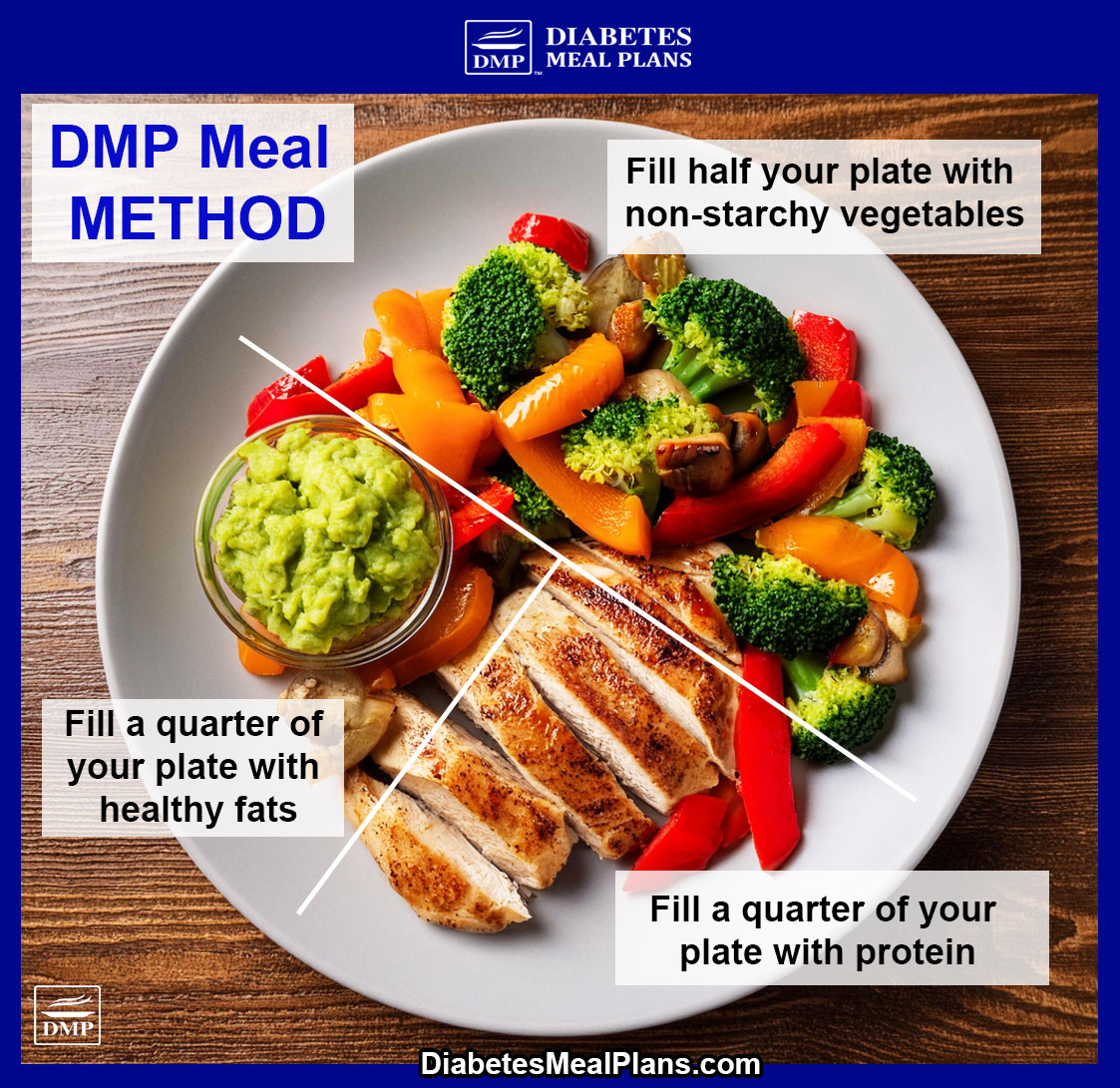
3. Prebiotic Fibers
Prebiotic fibers generate a specific short chain fatty acid in the intestine called propionate, which boosts the release of GLP-1.
Prebiotic fibers not only boost GLP-1 secretion, they improve glucose tolerance, prevent excess food intake, and ward of fat gain, especially visceral fat accumulation around the belly.
Prebiotic foods include:
- Asparagus
- Garlic
- Onions
- Jerusalem artichokes
- Leeks
In addition, prebiotic supplements may be beneficial to increase the number of GLP-1 secretory cells.
How to incorporate: Add asparagus, garlic, and onions to stir-fries, soups, or pesto-enhanced salads for a tasty fiber boost. Jerusalem artichokes and leeks can be included in salads, roasted sides, or blended into soups to support gut health with natural prebiotics.
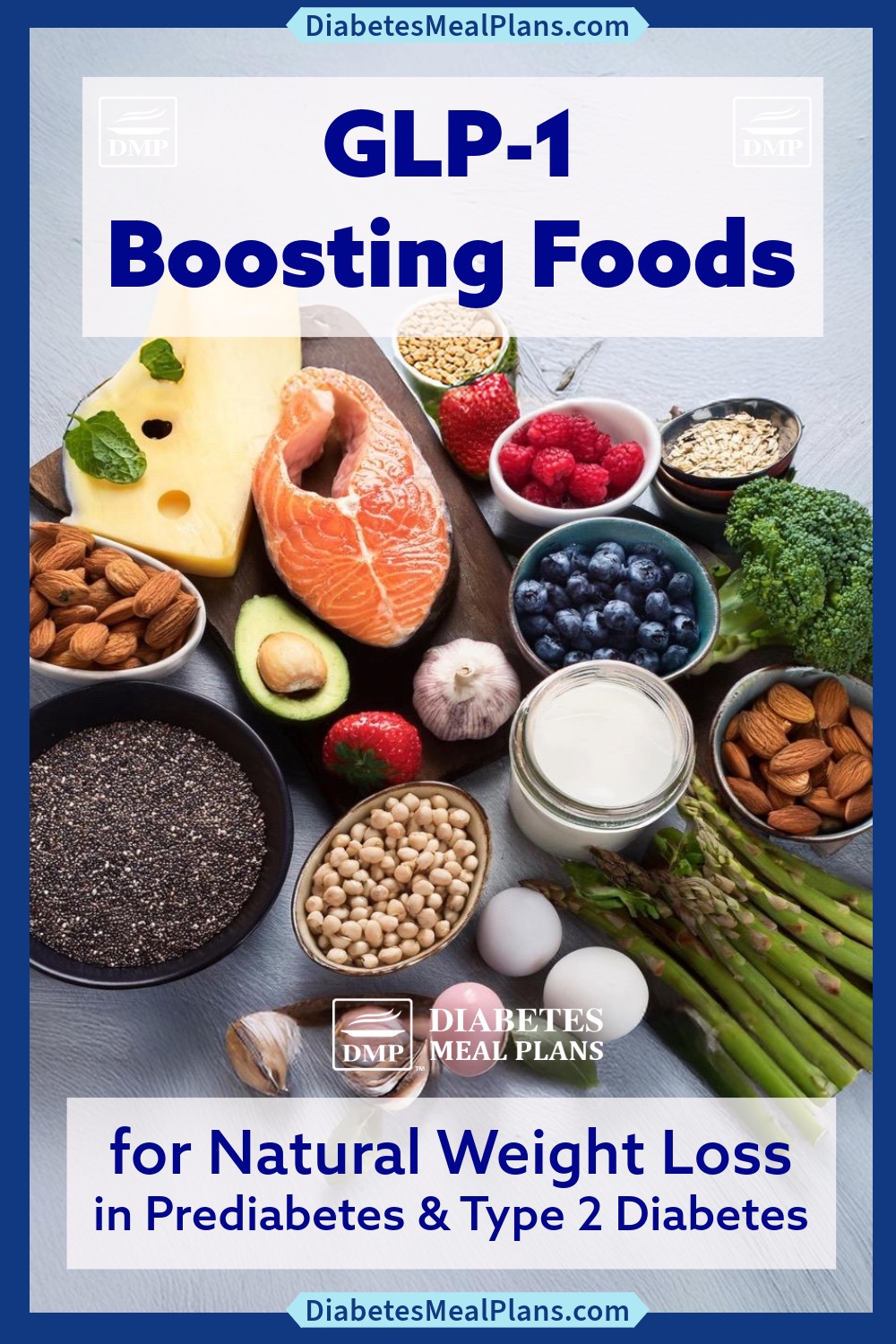
4. Nuts and Seeds
Almonds, walnuts, macadamias, pumpkin seeds, chia seeds and flaxseeds are high in fiber and healthy fats, which help keep blood sugar levels stable.
The healthy fat content also slow digestion and prolongs satiety, aiding in extending the nutrient release period, supporting gradual GLP-1 secretion.
How to incorporate: Add a handful of nuts to your salad, eat pumpkin seeds as a nutritious carb-free snack, or make a Roasted Nut Muesli for breakfast.
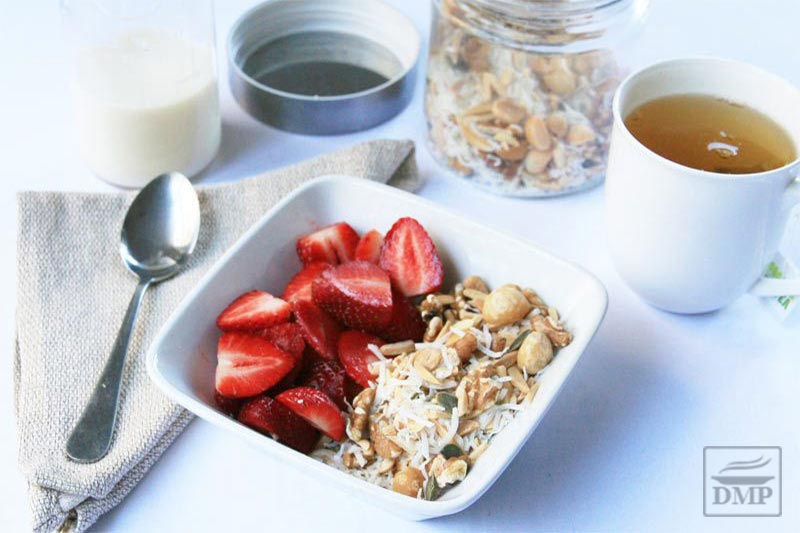
5. Protein-Rich Foods
Protein-rich foods, especially dairy, eggs and fish, have been shown to increase GLP-1 levels.
Including any type of protein with meals—chicken, steak or tofu–also promotes satiety and reduces blood sugar spikes.
In particular, a protein-rich breakfast is a very effective way to stabilize blood sugar throughout the day.

How to incorporate: Include protein with each meal—like scrambled eggs with breakfast, grilled chicken in your salad at lunch, or salmon for dinner.
This boost not only supports GLP-1 but also helps preserve muscle – a key factor in boosting our metabolism for weight loss, especially as we get older.
6. Berry-Boosting Power
Berries such as strawberries, blackberries and raspberries are high in fiber, antioxidants and anthocyanins.
Berries help regulate blood sugar and promote GLP-1 release!
Unlike other fruits, berries are low in sugar, making them an excellent choice for a diabetes GLP-1-boosting diet, in small portions, of course!
How to incorporate: Add a handful of berries to yogurt and eat a delicious Mixed Berry Parfait for breakfast, mix them into a smoothie, or have them as a naturally sweet snack combined with a few nuts during the day.
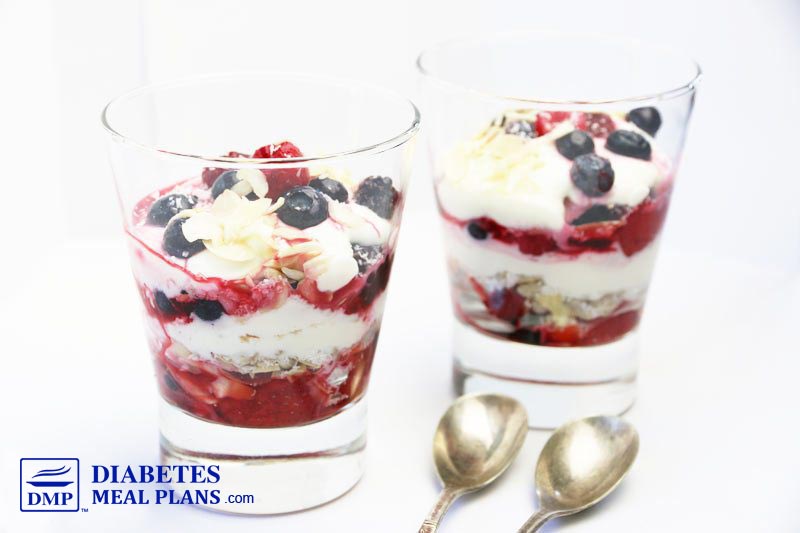
Lifestyle Tips to Maximize GLP-1 Naturally
Along with including GLP-1-boosting foods, consider these lifestyle strategies to maximize GLP-1 levels:
- Stay Hydrated: Drinking water throughout the day aids digestion and increases GLP-1 production. It also keeps hunger cues at bay.
- Get Moving: Physical activity is a powerful tool for improving insulin sensitivity and stimulating GLP-1 release. Try walking after meals, doing resistance exercises, or taking a yoga class to boost your GLP-1 naturally.
- Mindful Eating: Eating slowly and mindfully can also enhance GLP-1 release, promoting satiety with smaller portions and supporting weight loss.
- Adequate Sleep: Quality sleep is essential for hormone regulation, including GLP-1 regulation. Aim for 7-8 hours each night to keep your body’s natural processes functioning optimally.
Small Changes, Big Results
Incorporating GLP-1-boosting foods into your diet is a great way to support weight loss and blood sugar control naturally.
By nourishing your body with these foods and making a few lifestyle tweaks, you’re setting yourself up for sustainable success in effectively treating your type 2 diabetes or prediabetes.
Remember, each small choice adds up – it really does!
Small consistent steps, add up to big results!

Leave a Reply